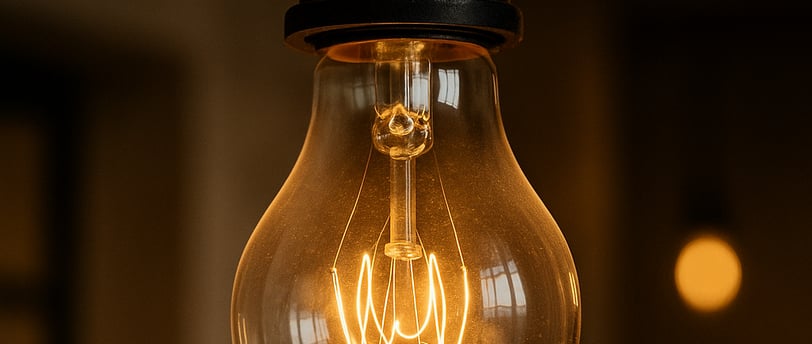Why Your Lights Flicker: Homeowner’s Guide
Discover the reasons why your lights flicker and learn when to be concerned. This comprehensive homeowner's guide provides essential tips for achieving electrical peace of mind in your home.
5/21/20252 min read


If you’ve ever noticed your lights flicker when the AC kicks on or during a windstorm, you’re not alone—and you’re not crazy either. In fact, flickering lights are one of the most common electrical complaints from homeowners here in Suffolk County. But what causes them, and when should you call in a pro?
Let’s break it down.
Common Causes of Flickering Lights
Large Appliances Starting Up
When big appliances like your HVAC system, washing machine, or refrigerator start up, they draw a lot of power. This momentary surge can cause a slight dimming or flicker in nearby lights. It’s generally harmless—but if it’s happening frequently or severely, it could be a sign of a circuit overload or outdated wiring.Loose Connections
Loose or corroded connections in your light fixtures, outlets, or breaker panel can cause intermittent power loss. This is where things start to get dicey: these types of faults can lead to overheating and even electrical fires.Overloaded Circuits
Suffolk homes, especially older ones built before the 1980s, often weren’t designed for today’s energy loads. You may be using extension cords or power strips as a workaround—but that’s just putting a Band-Aid on a bigger issue. You might need a panel upgrade or dedicated circuits.Voltage Fluctuations
If you notice lights getting brighter and dimmer, or electronics acting up, your home could be experiencing voltage swings. That’s a problem for both safety and the lifespan of your appliances.
What You Can Do
Step 1: Diagnose
Try to note what’s happening when the lights flicker. Is it always tied to a certain appliance? Does it happen during storms?
Step 2: Inspect Your Fixtures
Turn off the power and check the bulb, socket, and wiring on affected fixtures. If anything’s loose or scorched, stop there and call an electrician.
Step 3: Get a Professional Inspection
Especially if you have an older home or haven’t had your panel looked at in the last 10–15 years, it’s time. A licensed electrician can test for dangerous connections, overloads, or needed upgrades.
Real Talk: Is It Time for a Panel Upgrade?
If your breaker trips when you run the microwave and toaster at the same time—or if you’re still working with a 100-amp panel—upgrading to a 200-amp panel can be a game-changer. It’s not just about convenience; it’s about safety and future-proofing your home.
Check out our guide to electrical panel upgrades here.
Suffolk County Spotlight
Did you know? Many neighborhoods in Patchogue, Bay Shore, and Sayville still have legacy knob-and-tube wiring or aluminum branch circuits. If your home was built before 1975 and hasn’t had a full electrical inspection in a while, give us a shout.
Final Word
Don’t ignore flickering lights. Sometimes it’s harmless, but sometimes it’s your house whispering, “Hey, something’s not right here.” Stay ahead of the problem and stay safe.
Need an inspection or just want peace of mind?
Schedule a local consultation with Long Island Electric Pro—serving Suffolk County with pride, professionalism, and plenty of experience.
#ElectricalSafety, #SuffolkCountyNY, #HomeUpgrades, #LongIslandElectrician, #PanelUpgrade, #FlickeringLights, #ElectricalInspection, #HomeMaintenance, #SmartHomeReady, #LongIslandHomes
